MADISON 101
The student guide to all things JMU
How to get involved
How to be a Dukes fan

What to expect as a freshman
2023-24
CommonWealth One is JMU’s trusted, full-service credit union, and student banking is better here. We’re conveniently located on campus and offer everything you might need financially as a student. What we don’t have? Excessive and unnecessary fees.

When it comes to handling your finances as a student, we’ve got your back with:

The secret is out – CommonWealth One is here to help you thrive financially at JMU.
To open an account or learn more about JMU Student Perks, which include special events, free food and prizes, visit cofcu.org/DUKES or stop by our branch in The Union (next to the post office).

The best place for banking isn’t a bank at all!
@COFCU JMU CommonWealth One @commonwealthone CommonWealth One Federal Credit Union
Checking
Online &
The Union (Next to the Post Office) Monday – Friday: 9:00 am – 5:00 pm
Savings Account Free
Account
Mobile Banking
Financial Resources
Low-Rate Loans







LIVE THE ALTITUDE.COM 1728 PORT REPUBLIC RD. | HARRISONBURG, VA 22801 | 540.437.2777 ALL INCLUSIVE | ROOFTOP ACCESS | 24/7 FITNESS CENTER YOGA CENTER | PRIVATE STUDY ROOMS | CAFE/LOUNGE STUDENT LIVING REDEFINED Spaces filling fast in Phase I & II. Apply today for Fall 2024! 4
What’s Inside
How to break out of the campus bubble

JMU’s student-run driving organization
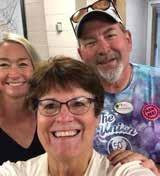

A day in the life of a freshman
Dukes from day one
What to do as a JMU fan Football, basketball: What do expect from the Dukes

11 18 22 31 34 40
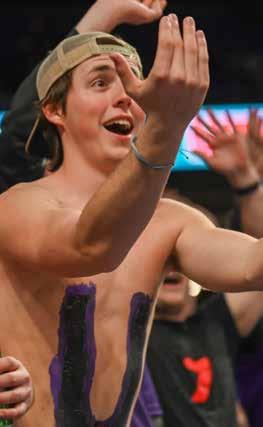



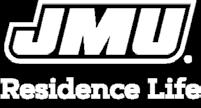


2 0 2 4 - 2 0 2 5 CONTRACTS OPEN O C T O B E R 1 , 2 0 2 3 B E C O M E A N R A ! @jmureslife www.jmu.edu/reslife res-life@jmu.edu 540.568.HOME TO LIVE SAFE • TO LIVE CLOSE • TO LIVE S U P P O R T E D • T O L I V E C O N N E C T E D MAKE THE CHOICE AND AFTER YOUR FIRST YEAR YOU CAN... BUILD COMMUNITY & A SENSE OF BELONGING GAIN LIFELONG SKILLS AND GET PAID!
Dear reader,

There’s a cool breeze in Harrisonburg. I feel shivers up and down my arms and my face stings. I just had it painted half purple and half gold. How else was eight-year-old me supposed to show my support for the Dukes? Besides, it always made my parents laugh.
My earliest memory at JMU isn’t what most people’s are. It was not when I toured, my first impression of the Quad or the food I got with a free voucher at D-Hall. It wasn’t the Duke Dog statue by Bridgeforth Stadium or watching my tour guide awkwardly shout “J-M-U” to students hoping they would respond with “Duuukkess.”
My first memory of JMU isn’t actually at JMU. It’s my mom greeting me with a cheer after the Dukes upset Virginia Tech in 2010. “We won!” She shouted from the kitchen. It’s sitting in my grandparent’s den as my parents drop my brother and I off because they’re headed to the football semifinal against Montana. It’s the cold rush of the bleachers at Towson University as the Dukes battle the Tigers. My parent’s friend got kicked out for throwing a streamer; he’s featured
I remember when the Godwin parking lot was grass, running around to all the stands during tailgates to get as many bead necklaces and free shirts as possible. I climbed the rock wall during Military Appreciation Day and saw the campus from above. I remember wandering around the Quad and by Madison Union with my best friend, the daughter of the guy who threw that streamer. When it came time to go to college, I considered all my options. JMU wasn’t an easy choice and back then I thought it was because I wanted to be different, to be the rebellious teenager who wasn’t going to become a fourth-generation student at her parent’s alma mater. Now, I think it was because despite the good, perfect “bubble” if you will, I knew that it wasn’t all pretty. I knew that, deep down, JMU had its bruised parts, the ones not covered up with makeup. I didn’t want this perfect place to be ruined.
As I went through college, I learned I was right. Everything is not what it seems, especially when you experience it through a global pandemic. But just because it’s not perfect, it doesn’t mean these things don’t need to be talked about. Talking about the good, the bad and the ugly all make up one unique thing: JMU.

So that’s what I strived for Madison 101 to be. To be a guide for new people — regardless of year — to read and understand what JMU is. My staff and I wanted to show people how students eat and the diet culture around it. The way information spreads on campus and what you can do to help it. And, of course, how to be a good fan in Bridgeforth on Saturdays. While you can’t see it now, we wanted to give you a glimpse of what Carrier Library will look like when the current freshmen are seniors and how they can prepare for their time at JMU.
It doesn’t matter where you come from or what your major is. The thing is, you made it to Harrisonburg, Virginia. So read Madison 101, learn what it’s like to be a student here from students and make your college experience your own. From someone who walked across the stage in May wishing they had more time, your experience is what you make it. Don’t be afraid and embrace everything JMU has to offer.


Best,
Savannah Reger Editor
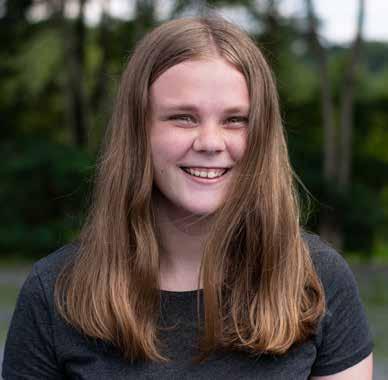
7
A new chapter for JMU libraries

8
Words by Carolynn Unger. Photos by Sophie DiFrancesco
One of the most important aspects of being a college student is studying. Whether it be for exams or a presentation, studying keeps students on track with school. People study in different environments. Some prefer quiet spaces while others don’t mind company. Libraries, specifically Carrier Library, provide both environments. Carrier is one of several spaces students can go to work on schoolwork or to relax, but it won’t be around for some time.

Carrier Library begins renovations following graduation and is scheduled to reopen in fall 2026. For incoming freshmen, this means Carrier won’t be open again until their senior year. Since Carrier has several features like study rooms for groups or for private use, computers, printers and media viewing rooms, the versatility and usefulness of Carrier has left students with a question: Where can they study in the meantime?
Bethany Nowviskie, an English professor and JMU’s dean of libraries, said a feasibility study was conducted in 2017 to discuss what it would take to conduct a renovation. The study was part of a larger plan to grow the campus and changes periodically to give information about what state funding is used for and the priorities on campus.
“The need for an expanded and renovated Carrier Library has been probably on the books as long as the need to build Rose Library on

East Campus,” Nowviskie said.
According to their website, they are expanding due to crowding and safety reasons. In addition, accessibility and navigation are important factors in expanding the space.
One study documented as far back as 2014 involved a building task force. The study determined how a renovated Carrier is beneficial to JMU students and staff who use the building.
“We really have been working back for years and years to build the story around how impactful a renovation could be,” Kelly Miller-Martin, director of facilities, operations, said.
Carrier is undergoing extensions in addition to renovations. Navigating the inside of Carrier has been difficult due to additions being built over the decades, and Nowviskie said students and staff are sometimes confused about finding where they need to go. According to the Carrier timeline, “Carrier in Context: A Visual History of JMU Libraries”, a two-story addition was added between 1980 and 1982. A clear path will be built from Grace Street through Carrier and another from the historic entrance to D-Hall
“We’re going to be beautifying and opening up and improving many of the existing spaces in Carrier,” Nowvisikie said.
Construction includes renovations to the three stories, glass windows and outdoor spaces.
Carrier will have a 24-hour accessible study
space on the ground level of the Grace Street side. Other features include a kitchenette, a relaxation room and a cafe, just to name a few. Nowviskie said the coffee shop will be more accessible to students, especially in trying to avoid the long, winding lines and crowding.
“A lot of care went into the layout of the new cafe to make that improve too,” Nowviskie said.
Miller-Martin said accessibility and inclusivity are important in the plans.. These changes make sure to follow the guidelines of the ADA (Americana with Disabilities Act) An example that Miller-Martin included was having a universal bathroom on each floor.
“We know that’s something Carrier can do better at,” Miller-Martin said. “It’s a really great opportunity to build those really foundational pieces from the start.”
These changes involved a universal design committee and connecting with JMU’s Office of Disability Services.
While the library is under construction, students may be wondering what they can do and where they can go while waiting for the renovations to end.
Senior nursing major Kaela Desiderio — who is graduating in December — said she studies in Carrier almost every day.
I go between classes or I try to get there pretty early before class,” Desiderio said. “Sometimes I’m there right when they open just to
Carrier Library to undergo renovations until 2026

make sure I get a good spot.”
Desiderio said she notices how crowded Carrier gets and mentioned that many students have to find a new place to study, including herself. She said she’s excited for the renovations, but is concerned about where she’ll study this fall. Desiderio has thought of alternatives including the Health and Behavioral Sciences (HBS) building and Wilson Hall. Desiderio said she’s sure there are plenty of other spaces on campus for freshmen and current students.
“But other than that,” Desiderio said, “I’m going to miss Carrier a lot.”
Desiderio said she frequently visits the Starbucks inside Carrier At 7:30 right when it opens so there’s no long line,and hopes JMU brings the Starbucks truck to campus so that there will still be a coffee shop nearby.
In the meantime, there are several coffee shops on campus, like Dunkin’ Donuts in the Student Success Center (SSC), Java City in D-Hall, Merge Coffee Company in Taylor Down Under and Starbucks in Rose Library.
Student employees in Carrier will experience changes in terms of working in the libraries.
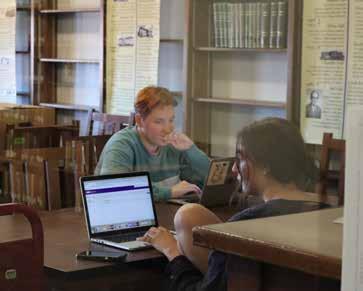
Junior Kriste Lipold, an intelligence analysis and interdisciplinary religious studies major, works as a desk assistant for both Carrier and Rose Libraries, where she greets people, answers
questions, organizes books and helps keep track of how many people use certain spaces for library funding purposes. Lipold said those who work in Carrier will simply move to Rose for further shifts.
Like Desiderio, Lipold said she’ll miss study spaces in Carrier during the construction period. However, she acknowledged the change will be good for the building and knows there are several other spaces on campus to study, including Rose Library. She’ll be working there primarily during the construction, which Lipold said works for her because her classes are mostly on east campus.
During the renovation period, Miller-Martin said the books in Carrier Library will be placed in The Hub, formally known as D-Hub, which serves as one of the locations for library pick-up and delivery. The equipment that’s used in The
Makery — a space that’s used for creative workshops — and the equipment loans services have been relocated to Rose Library.
Nowviskie said during Carrier’s construction, there will be an opportunity for the library to engage with campus. They will do this by continuing their services even though they will not be in Carrier. The pandemic was an example of the staff keeping the work going despite the students not being present on campus.
“All of our teams have been thoughtful about how they can make sure that faculty and students get what they need,” Nowviskie said, “We’re still really present and part of the life of the community.”
Miller-Martin said planning for the renovation has contributed to the library’s engagement opportunity. Coming together as a team to make sure everything is moved to the right place and having a strategy for continuing services has vital importance when preparing for the renovation.
“There’s a really beautiful moment of leaning into this time to reflect and refine our service provision and the ways we work together internally to serve so many different campus groups and the community,” Miller-Martin said.
Once construction is completed, Nowviskie said she’s looking forward to the reopening of the new Carrier.
“JMU will finally have the beautiful campus library on this side of campus that it deserves,” Nowviskie said.
Pop that bubble!
Some say college is the best four years of our lives.
Others don’t feel the same way.
It’s all too easy to feel stuck and detached from life outside JMU when you’re constantly caught up in campus life. The college experience is different for everyone and taking periodic breaks from that life is necessary to thrive. In order to relish in all JMU has to offer, it’s important to find ways to escape the “bubble” around campus. Here’s a few ways you can.
Check out downtown
Downtown Harrisonburg offers a variety of eateries, shops, museums and boutiques that are walkable from campus. Just a short way down South Main St., the downtown area is only a few blocks long but is filled with activities everyone can engage in.
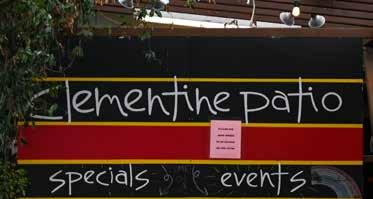
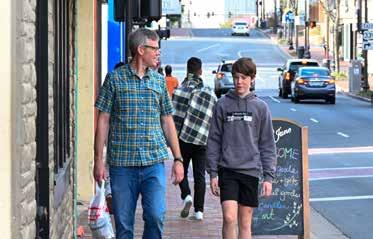
Tim Miller, vice president for student affairs, said he enjoys walking through the Agora Market downtown.

“I really appreciate how many small businesses have had an opportunity to exist in that space,” Miller said, “and to be able to be there and have a home without having to own their own building.
Take a walk off campus
Although most walking is done to and from class, a change of scenery for exercise is a great way to branch out. Harrisonburg offers some great spots for walking, running or hiking close to campus including Purcell Park, Hillandale Park, Lake Shenandoah and even the Edith J. Carrier Arboretum that’s located right next to East Campus.
Some hiking locations off campus require drive, like the Shenandoah National Park, High Knob Trailhead and the George Washington National Forest, but the views of the mountains can’t be beat.
Play with pets
One of the best ways to cure any sort of homesickness is to cuddle with furry friends. Places like the Rockingham SPCA or Cats Cradle are close to campus and are open to residents looking for pets to rescue. Stop by sometime and take a look around, and maybe consider fostering or adopting a pet to take home.

Also, keep an eye out for Miller, who frequently brings his dog, Duke Dog, around campus because he knows students are missing their pets from home.
Visit a coffee shop
Studying in your dorm or at libraries on campus can get old quick. Sometimes a new environment makes all the difference.
Some popular coffee spots downtown include Black Sheep Coffee, Broad Porch Coffee Co., Merge Coffee Company or Greenberry’s Coffee Co. If coffee isn’t your thing, try out Village Juice, Heritage Bakery and Cafe or Cinnamon Bear Bakery & Deli.
Join a club
Finding people with similar interests is a great way to make campus feel smaller. Whether it be a sport, a sorority or fraternity or a club, getting involved around campus means meeting new people and putting yourself out there.
JMU has over 500 organizations to choose from. Be sure to check out student organization night at the start of every semester and chat with the current members before picking one or two that fit your interests the best.
Don’t fall into a rut once you’re at JMU. College is all about making the most of it, and these will help you with just that.
Words by Madison Mills Photos by Savannah Reger
3 ways to escape campus and explore when classes are just too much
11
Friendly Faces
Words by Emma Johnson
The start of freshman year is daunting, especially for those going in without hometown connections. For many people, putting themselves out there in a community of strangers is the most challenging part of starting school. So, here are some friendly faces who will get you through your first year at JMU.
Nate Hazen: Student body president
Nate Hazen, a junior business management and coaching education double major from McLean, Virginia, was elected as the 2023-24 student body president.
Hazen was in a room with his two close friends when he found out he had won.
“It was a very special moment,” Hazen said. “I was kind of incoherent and it took a lot of time to sink in.”
Hazen, who lost to former student body president Shawdee Bakhtiari in the 2022-23 elections, said the outcome gave him the experiences and lessons to now give the position his all.
Before being elected student body president, Hazen was involved on JMU’s campus through various other positions, including JMU’s class of 2024 president and an executive member of JMU’s Young Life group, both of which have allowed him to connect with students in more ways than one.
“I’ve been able to see how starting up and managing clubs work,” Hazen said. “I’ve been involved in so many different aspects on campus … I’ve been able to know that the core purpose is making this place a better campus and a better environment for the Dukes at JMU.”
This time around, Hazen said he wants to make his presence known on campus.
“My platform is the student body and that can seem pretty general, but it’s the darn truth,” Hazen said.
Hazen ran knowing he wants the “utmost” for JMU’s campus and student body, he said. With the incoming class of 2027, he wants to enable students to have the same experiences, friendships and relationships he’s been given.
“I want to give it my all,” Hazen said. “It’s time to give back, you know … I owe a debt to this college’s community.”
With many changes coming to JMU in the coming years, such as renovations on campus and the biggest incoming class in JMU’s history, Hazen said he wants to be always ready for those and serve as a resource for the student body through its highs and lows.
Faith Forman: Student body vice president
Faith Forman, a sophomore media arts and design (SMAD) major from Lancaster, Pennsylvania, was elected as the 202324 student body vice president. Forman said she wants to maintain traditions at JMU.

One tradition Forman hopes to revamp is JMU’s Ring Premiere, a Student Government Association (SGA)-sponsored event where sophomores can view the unveiling of their class ring. Forman said JMU is one of eight schools in Virginia that gets to design a new ring every year and that the premiere used to be a highly attended event.
“A lot of people knew about [the ring ceremony] and since then, I think people have kind of forgotten that we even had that tradition,” Forman said. “Obviously, students enjoy these events and these super cool things that are JMU specific and I think, even more, would enjoy if they knew they were going on.”
Forman said her main goal is to increase attendance at traditional JMU events, like the Ring Premiere ceremony, but also Purple Out, Madison Vision and Madison Majesties.
In increasing attendance, Forman said she wants to develop the events more and increase awareness on campus that these events are happening. She said an aspect of this is making sure the entire student body feels included.
“I was really hoping the student body can get more involved with traditional events,” Forman said. “But also making sure that these traditions are a place where people from all backgrounds are welcomed and that everyone feels safe at these events.”
Forman was previously the unofficial “event planner of SGA” — a position that’s allowed her to go through all of these events from “the background and the sidelines” she said.
Matt Haynicz: Executive treasurer
Matt Haynicz, a junior geographic science major from Great Falls, Virginia, was elected as the 2023-24 executive treasurer.
Haynicz previously served as a member of the finance committee for one year, something he said has given him the experience to accomplish his goals.
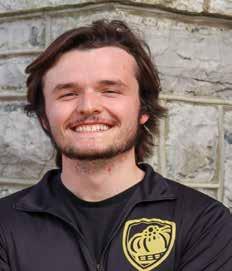
“I know that I have what it takes to help serve the student body,” Haynicz said. “I know that I also have the passion to serve.”
Haynicz said, said being a part of the JMU community means more outreach to individuals and hopes to help
5 students you need to know
students learn about various opportunities, such as grants, student organizations and financial resources, and aid the SGA finance committee in working with students and families.
“Money is a big deal,” Haynicz said. “It puts a lot of strain and a lot of stress on families and students and I would like to do what I can to help students have a little bit more peace of mind.”
Haynicz also said he wants to better serve individual students by expanding opp tunities and benefits like clothing discounts and the food pantry, in addition to supporting student organizations.
“This position and responsibility is something that takes a lot of responsibility to handle,” Haynicz said. “It’s not something that should be taken lightly … I believe it’s my job as treasurer to empower the Senate and Finance Committee members to give thorough and thoughtful reasoning to evaluate different financial decisions.”
Abigail
StudentCannella:
representative to the board of visitors
Abby Cannella, a junior public policy and administration major from Poquoson, Virginia, was elected as the 2023-24 student representative to the board of visitors (SRBoV).

Previously serving as a senator for SGA her freshman year and membership chair, Cannella said she wants to inform the JMU student body about what the Board of Visitors is and how important they are to every member of the JMU community.
“I think my experience at JMU is really something that makes me stand out a lot, just because I’ve had experience within student government and a leadership role that I’m able to use to my benefit,” Cannella said Her goals for the position are to encourage students to vote on the board, plan more student events and increase communication with the student body. She said she also plans on attending one club
meeting a week to get different perspectives and really hear from the student body to know what matters to them and bring those comments to the board, who she hopes will take them into account.
“What the role is today is both in a huge part because of the work that Xavier put in,” Cannella said. “But really adding to that, going out to the community, speaking with the students, and really informing them about what is a student rep to a Board of Visitors … and making sure that each and every student kind of give their input and talk about their experience at JMU and their experience is able to be vocalized on the board.”
Grant Johnson: Editor-in-chief of The Breeze
Grant Johnson, a junior double major in SMAD and Writing, Rhetoric and Technical Communication (WRTC), is the 2023-24 editor-in-chief of The Breeze, JMU’s studentrun newspaper.


For Johnson, upholding the foundations for student journalism and keeping the community on and off campus are his priorities, he said.
“I want The Breeze to be much more digestible this year and allow news to come to the students instead of them seeking it out,” Johnson said.
Johnson said he wants to build relationships with the student body and allow them to voice their opinions on what The Breeze should cover and report on, as well as increase outreach by having reporters on the Quad handing out papers and talking to students.
“I just want to do our best to encapsulate what students want to hear,” Johnson said.

Now Leasing for 2024 24-HOUR JIM FITNESS CENTER | BASKETBALL COURT JOE COFFEE BAR WITH COMPLIMENTARY COFFEE | 2 BUS ROUTES ON PROPERTY LIVETHEHARRISON.COM 1191 DEVON LANE | HARRISONBURG, VA 22801 | 540.432.1001 2 & 4 BEDROOM FLOOR PLANS AVAILABLE
‘Papa Dave’
A dynamic director retires after 30 years at JMU
Words by Ashley Anderson photo courtesy of David Barnes
What does 30 years at JMU look like? A flowy purple Hawaiian shirt, countless stories to tell and a nickname like “Papa Dave.”
Dave Barnes, a longtime member of the JMU community and the current director of the University Unions for 30 years, retired in June, leaving a lasting impact on the university. Barnes became the Assistant Director of Student Activities in July, 1993, and by the time October came around, he had already been promoted to director. By September,1996, he moved into his current position of Director of University Unions.

“He is one of the first people I met when I came here in 1999,” Towana Moore, one of Barnes’ colleagues, said. “He has always been a team player and has helped me in so many endeavors.”
Well, since 1993, JMU’s changed drastically, and Barnes has seen it all.
“There were 11,500 students when I started with nothing across the interstate except for the old convocation center,” Barnes said., “My job was to assist in getting Taylor Hall in The Union open for that coming fall semester.”
When the fatal shooting at Virginia Tech occurred in 2007, Barnes was quick to lend a helping hand to the Blacksburg community, with his reach expanding beyond Harrisonburg. Some of his staff from The Union went to Virginia Tech to relieve some of the stress and responsibility of the Squires Student Center Staff.
“Dave orchestrated our entire department to go down to take on their jobs, give them operational support and to grieve and do whatever they needed to do,” Joe Urgo, longtime co-worker in The Union and friend of Barnes, said. “That was so special to see. Dave was the spirit of it all.”
In a time of tragedy, pain and hurt, Barnes was one of the first people to take action to heal, restore and support.
“We all wore our JMU staff shirts but wore maroon and orange ribbons to commemorate our support for the Tech community,” Barnes said. “We drove there and back each day for a whole week to support them, I can’t talk about it without getting emotional, we were helping them heal.”
Barnes’ known not only for his time spent in one place, but his character too, said Cindy Chestnut, the Union’s executive secretary. She said Barnes is someone who is well loved, highly respected and a role model for many.
15
“Dave is the epitome of character,” Chestnut said. “He speaks it, acts it, lives it. Dave looks for this in others. It either breaks his thoughts of you or he respects you for it.”
Barnes has been fighting for students from day one, and an example of this is the hand he has had in many of JMU staples; from the creation of the spirit rock to the addition of the gold seal onto the Quad.
“I asked Towana Moore to help with a project on east campus in January,” Barnes said, “and by the beginning of March we had a rock from the demolition for UPark to put on east campus that is now one of students’ ways to practice free speech.”
Barnes also started what is called the Madison Society, a group of people from all across campus including faculty, staff, administration and students that had three characteristics: bleed purple, had a deep passion for supporting positive additions to JMU, and were in key positions that could get things done.
“Dave wants all students to know they are important,” Chestnut said, “and their parents that leave their children at JMU, will have a wonderful experience, for the rest of their lives.”
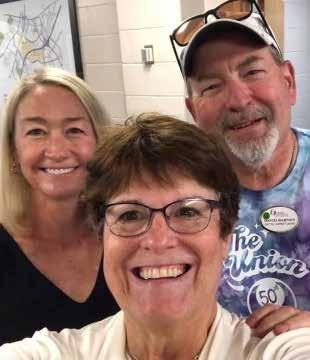
Barnes loves others well and cares about the students deeply, he said. Although Barnes is taking a step away from the university after 30 years, that doesn’t mean the JMU spirit is going to be any farther away from who he is. He’ll still be around campus in his infamous purple Hawaiian shirt, as he is going to have an emeritus status, letting him continue to be involved with events and the overall production of JMU.
“It’s been an incredible place to work with great people,” Barnes said. “We aren’t perfect but my God it’s been good, most days it doesn’t feel like a job because I just feel so blessed.”
DESIGN. PRINT. MAIL. HERE.

46 Laurel Hill Road Verona, VA 24482 540.248.5300 office sales@midvalleypress.com midvalleypress.com
JMU students are often looking to fill their free time, along with a way to bring in extra money. Finding a job, whether that be on or off campus, is a solution to both.
Ana Seifert, a junior media arts and design (SMAD) student, is a current University Recreation Center (UREC) Member Services employee, which includes “greeting participants, providing customer service, and enhancing the environment.”
Seifert said she’s passionate about fitness, which is what initially drew her to the position.
“Working at UREC has allowed me to connect with so many people of all different ages at JMU,” Seifert said. “It has really opened doors for me.”
Seifert said the position fits her unique schedule very well. She typically wakes up early and often takes on the opening shifts, from 5:45 am - 8:45 am.
“I am a natural early riser, so having the opportunity to work before 6 a.m. has really fit my lifestyle well,” Seifert said. “I can see how many people wouldn’t enjoy it, but I love waking up and being greeted by so many friendly faces at work every shift.”
When discussing why she felt the need to apply for a job, Seifert said, “I decided to add a job to my college schedule to make my free time feel more fulfilling. I often found myself wondering what to do before and in between classes, and now I am able to schedule shifts to fill that time.”
Morgan Biebighauser, a junior graphic
has really opened doors’
How JMU Students utilize and balance having jobs
design major, works as a barista and baker at Greenberry’s Coffee Co. She decided to apply to work at this specific coffee shop since the customer base is “extremely student heavy” with it being so close to JMU’s campus.

The shop’s unique location, found on the corner of S High Street and W Grace Street, gives Biebighauser and its other employees the best of both worlds in terms of interaction within the various communities of Harrisonburg.
“It’s technically off campus, but it’s so close that I interact with a lot of students, as well as families and individuals who don’t attend JMU,” Biebighauser said.
“I also appreciate talking with the regulars who have lived in Harrisonburg for several years,” Biebighauser said. “I feel that I learn something new every day from these people and it makes me feel like I’m a part of the ‘real world’ instead of trapped in the bubble that’s college life.”
For students looking for a job on or off campus, Biebighauser said her advice is to find a job that’s willing and flexible with your life as a student.
“I believe it is also important to manage your time well and know your own limits so you can prevent burning yourself out,” Biebighauser said.
Junior international business major Sebastian Ventura has worked multiple jobs in the Festival Conference and Student Center. He’s currently building manager where he’s in charge of opening and closing the building, setting up various
events for different organizations using the spaces, and answering general questions for students.
Previously working in the Festival food court, Ventura transitioned over to the conference center as a building manager because it fit his schedule better, he said.
He enjoys this new position because the scheduling goes “hand-in-hand” with his schoolwork and is “catered” toward his school schedule.”
Ventura recommended that students looking for a job need to network “as much as possible.”
“Creating connections with lots of different people will only make getting jobs easier,” Ventura said.
Chloe Sikhrangkur is the current events and operations coordinator of Festival and oversees hiring students who are looking for positions like Ventura’s.
Sikhrangkur said she works to spread the word about hiring for jobs on campus in different forms of advertisement including QR codes, surveys, and school-wide email blasts.
She encourages students to look at the many posters around campus and the emails being sent if they’re looking for new career opportunities.
In terms of hiring, Sikhrangkur said she’s looking for students who are flexible and open-minded.
“It’s more about the job in the moment,” Sikhrangkur said. ”We’re here to help and nurture.”
‘It
17
Words by Katie Dunn, graphic by Madi Rohm
S erid e s rof ts stned
SafeRides is a volunteer organization that gives 100-150 free, non-judgemental rides every Friday and Saturday night, according to the JMU SafeRides website. Volunteer work consists of monitoring the phones to receive calls, connecting callers with the closest SafeRides car and bringing them safely to a place of residence. SafeRides isn’t just a free ride but helps to keep the JMU student body safe. Whether it’s one car ride, one speaker or one wordof-mouth mention about the work the organization does, SafeRides is making a difference in the JMU sphere as a result of the work they do helping students.
The organization has over 100 students and works to educate members of the Harrisonburg community. From educative seminars, outreach projects, and inter-personal development
Every fall, students can apply to be a part of SafeRides. It’s an entirely student-run Federal Executive Board (FEB) organization, which means it’s funded by the university and free for their members.
Sophomore Carter Ward liked the vision of SafeRides and wanted to join because it was a fun way to make new friends while helping the community.

“I feel like everyone knows that we give rides to students, but they don’t know that half of our mission is dedicated to educating the community about the dangers of drinking and driving,” Ward said.
Many of the students who are involved in the organization
have some sort of personal tie to drunk-driving, or know someone who has been impacted by it, they said.
“Every day, about 32 people in the United States die in drink-driving crashes- that’s one person every 45 minutes” senior SafeRides student Kerrington Martin said. “No one wants to get the phone call that their son, daughter, or friend have been killed by something that could have easily been prevented- that’s why SafeRides is here; so no one has to get that call.”
Members of SafeRides have seen first hand how common drinking and driving is in college. What SafeRides has been able to do is keep people out from behind the wheel while sharing stories of times where the best decisions may not have been made.
“It is a real problem,” Ward said. “The fact that we can bring in speakers to share their personal experiences with the community is so incredible because people can see the impact that drinking and driving can have on people.”
For sophomore Gracie Evans, she said she joined SafeRides to support the community and give rides to students who are simply trying to get home safely.
“We can’t always please everyone or give every single person a ride home, but we are doing our best and creating a safe environment for those who need a safe ride home,” Evans, said.
By using SafeRides, students have the opportunity to get themselves home in a way that’s safe for both themselves and the people around them. n.
“I have never felt like I was a burden or being stupid for calling SafeRides,” junior Madaline Davis said. “I think as students, it gives us an accessible way to call for help when needed — no questions asked.”
For college students, sometimes there isn’t much room in the budget to spend that extra money on an Uber or Lyft each weekend. SafeRides gets students home safely for free and helps take the stress away of finding a ride late at night.
SafeRides is not made just for weekend nights and the community benefits from the work that it does.
Words by Ashley Anderson. Photo by Sophie DiFrancesco
18
JMU nightlife crew aims to keep students safe on the roads
Onto the next
JMU students share what it’s like finding off-campus housing
There are over 20,000 students that attend JMU, each looking for a place to live.
In a small town like Harrisonburg, students preparing to transition from dorm-style living to an apartment or house, the demand for off-campus housing is incredibly high, and finding the right place to live is sometimes difficult.
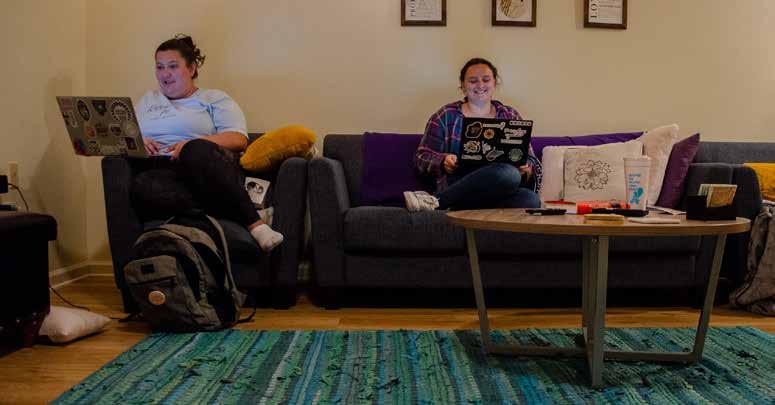
So come September, it’s time to batten down the hatches and find a place to live and students have their strategies.
Grace Belt (‘23) said she plans to stay in the area to work as a conference room manager at Hotel Madison. Although she’ll no longer be a student , she still needs a place to live. Belt said taking the time to research apartment complexes and visiting in-person is a helpful step in determining where to live.
“I think we found it best to actually go to places in person and get a full tour and ask questions directly because online things aren’t always as straightforward as they seem,” Belt said. “So, going to the actual locations and talking to the realtor, whoever it may be, was probably our best strategy.”
Sophia Bressert, a sophomore, said she had to re-sign at her apartment complex due to unavailability elsewhere. Securing a spot where she currently resides she said was her only realistic option.
“We were just worried about getting the lease on time because that goes really quickly if you don’t already have a set plan,” Bressert said.
This process moves swiftly and sometimes starts before students even get comfortable
with where they currently reside.
“You have to basically have a lease signed by November to make sure you have a set house because housing goes here quickly,” Bressert said. “So, that was like in the back of my head when I was trying to find a place this year.”
Similarly, sophomore Liam Barlow said he re-signed at Foxhill Townhomes, the place he currently lives. Last year as a freshman, he said he relied on interpersonal relationships to find a place to live.
“Yeah, [lease deadlines] definitely are pushed up very early, especially for freshmen,” Barlow said. “Thankfully, I had a friend from home who made it very clear that that was going to be the case, and it was going to feel very rushed,” Barlow said.
He ended up at his current residence because of a friend who lived there prior to him offered him priority to sign the lease off of him.
Another strategy students can use to get around the demand for off-campus housing is their peers. Upperclassmen who have gone through this experience are good resources for navigating moving off-campus.
“I pretty much got most of my information from upperclassmen who knew how to experience living around JMU, and sort of just decided which place would be best through them,” Barlow said.
Despite research and talking to peers, circumstances may change and even alter living plans. With housing options dropping by the day, you should always
have a plan.
“I live with five people and we all wanted to stay together,” Bressert said, “but the budget just wasn’t in range for anybody, so we had to split up three and two so looking for that was, like, really hard.”
Off-campus housing in Harrisonburg can go as low as $400 per month, per resident, to as high as $800 per month, per resident.
“Arcadia used to be $570, but this year they are putting it at $700,” Belt said. “So, it puts people who don’t sign in time and already live there in a position where even if they want to re-sign, people can’t. So that’s just more displaced people because not everyone can afford that.”
Students have their methods, but their thoughts each echoed the same sentiment: it’s difficult to find a place in a timely fashion that fits every individual’s wants and needs and is affordable.
“There is a lot of pressure for students to sign leases in the fall, which is kind of odd, especially when you’re a freshman and don’t know anything yet and they want you to decide where you want to live a year from now,” Belt said.
As underclassmen get adjusted to their new lives on campus, it’s a quick transition moving from a dorm to finding a new home for the following year very early on in your college career.
“In the dorms, it was especially hard because you’re still getting to know everybody and you have to basically have a lease signed by November to make sure you have a set house because housing goes here quickly,” Bressert said.
19
Words by Kevin Scher, photo courtesy of The Breeze
Information Overload
Baffled by misinformation? Here’s how to know which sources to trust
Words by Haley Huchler
Information is everywhere these days. From our feeds to our friends, all sorts of stories are being thrown in our faces from the moment we wake up to the second we close our eyes at night. With information overload, it can be challenging to tell which news is real and what’s fake.
It’s important to stay up to date with news and current events — but how can busy college students find the time to filter through all the content being thrown at them and know what to trust? Here are some tried and true tips on determining which news sources to trust and how to evaluate if a story is real.
Use your resources Trust but verify
The first step to take is building a reliable repertoire of news sources. The best place to start is with national, reputable news organizations. JMU provides students with free access to three national newspapers: The New York Times, The Wall Street Journal and The Washington Post. Ryan Alessi, professor in the School of Media Arts and Design (SMAD), said he recommends reading these papers as the first stop for information.
Alessi said the reason why major newspapers are good sources to trust is because their stories go through multiple rounds of editing,vetting and fact-checking before being committed to print.
“[These newspapers] go through the verification process, so you know if it runs in those papers, it’s true,” Alessi said. “If they do make a mistake, they are transparent about their corrections.”
Alessi’s biggest tip for students? Trust but verify.
Alessi said he recommends a three step process: First, have solid sources of information you can go to regularly. Second, look around to see what others are saying if you have any doubts.
“I always suggest to shop around,” Alessi said, “so if something looks explosive or sensational or salacious, maybe look at other news organizations and see if they are also covering it.”
Third, if still unsure, use a fact checking website like Snopes or PolitiFact to evaluate stories. These websites are dedicated to investigating claims and clearing up misinformation, making them incredibly useful tools in discerning what’s true and what’s false.
20
Be wary of social media
The ugly side of social media isn’t just cringey TikTok dances — it’s rampant misinformation and false news. Social media is becoming a major danger to us in the way that it spreads fake news.
Charlotte Matherly, editor-in-chief of The Breeze for the 2022-23 school year, said her time at The Breeze showed her how often misinformation spreads through social media on a college campus. Matherly said platforms where people can post anonymously, such as YikYak and SideChat, are where she sees the most ungrounded claims.
One of the problems with social media is how stories are blown out of proportion, so a kernel of truth in a story turns into something completely nonsensical.
“A lot of things are overemphasized or catastrophized on social media when maybe the true story isn’t actually that big or scary,” Matherly said.
Anyone can unintentionally participate in this vicious cycle by reposting or sharing something without checking to see if it’s true.
Turn to the experts
There are classes at JMU that help students to become more media literate. Many of these are housed within the SMAD department, but even non-SMAD majors can take advantage.
SMAD professor Gwyneth Mellinger teaches SMAD151, a course that focuses on the impact of media and advertising on our daily lives and how to navigate this landscape.
“One of the things I hope students get from a class like SMAD 151 is the understanding of how powerful the media are,” Mellinger said.
In Mellinger’s class, students spend time discussing what real news looks like, how to vet a source and how to filter through online information. , Mellinger advises students to be mindful of the false message that can spread online.
“One of the really disturbing facts about this moment in time is that there are people who just make stuff up and disseminate it through social media,” Mellinger said.
Don’t forget student publications
Don’t forget student publications
Along with The New York Times, The Washington Post and The Wall Street Journal, Alessi also said he recommends that JMU students look to The Breeze, JMU’s student-run newspaper, to read local information. Although The Breeze is smaller compared to a newspaper like The New York Times, it holds itself to similarly high standards of reporting, making it a reliable place for students to turn to for JMU updates.
The Breeze is an active student media organization at JMU, with a weekly paper, online website, weekly newscast and active social media feeds. The student newspaper and broadcast reports on all aspects of campus affairs, from clubs to Greek life to student government. Students can turn to The Breeze to learn about the latest additions to dining hall offerings on campus or JMU baseball stats. The Breeze even covers breaking news in Harrisonburg, making it a great place for students to turn when they want to learn details about their community.
One important thing to note about The Breeze is that it operates independently from JMU, meaning everything is run by student reporters. This allows them to work outside of the university’s agenda and act as an independent source of news.
Students can be assured that every story published by The Breeze goes through multiple rounds of editing and fact-checking before publications. The Breeze limits its social media to only posting about stories that have already been verified, so it knows that it won’t be disseminating misinformation across its platforms.
21
A day in the life
A JMU freshman shows you a typical day on campus through photos
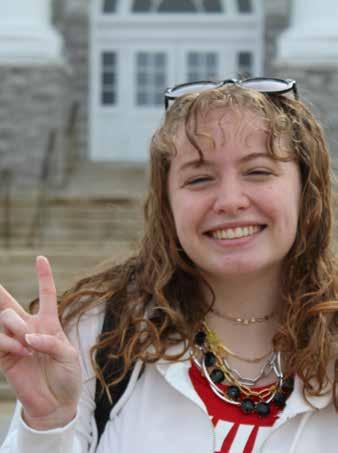
Photos by Sarah Herring and courtesy of Martina Peralta, captions by Sarah Herring.
1 2 Good Afternoon!
Martina Peralta, an education major, heads to Wilson Hall for her 12:25 p.m. class — History 150. She’s taking this class in order to fulfill her General Education requirements, specifically the Cluster One: Critical Thinking requirement.
3
Aquick turnaround
Peralta has statistics immediately after her history class, so she walks past the Quad to get to Burruss Hall. This is a short walk, but around this time the Quad area is packed with people heading to classes, dorms or dining halls.
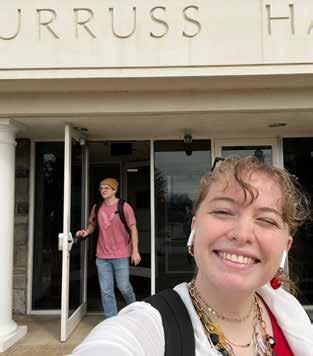
Timeforabite
After finishing her classes for the day at 1:30 p.m., Peralta heads to D-hall, where she meets her roommate Maria Behrends. Peralta uses one of her punches and gets a burger from the burger station, one of her favorite stations, she said, at D-Hall. She enjoys lunch with her roommate, before the two finish their meals and get up to place their plates in the dishwasher room.

At the end of a long day, Peralta returns to her dorm to finish up her homework and chat with some friends. Peralta considers going to a late-night swing dance class at UREC, but she decides against it today. Once she finishes all her work, she finally goes to sleep — excited to face the next day of her life as a freshman.
Anotherdaydone Meeting time!
Peralta is a member of the Latinax Student Association and she has a club meeting in Miller Hall where she’s giving a presentation about Chile — the country she’s from. On this day, she participated in the club’s assassin game; a game where you are assigned targets that you have to “assassinate” by touching them with a spoon. Luckily, today was an immunity day where people could be immune from assassinations if they wore an outfit that represented their country.

The debrief
The two roommates spend time in their dorm room where they watch shows, like Game of Thrones and Breaking Bad, and work on homework together. Their dorm walls are covered with memorabilia, ranging from printed-out pictures to sticky notes to negative COVID tests. Behrends even has a giant, fake sword propped up above her desk that references Naruto, a show that she enjoys. The two said they make their dorm room feel like an apartment, and they feel they’ve accomplished this task.



bite
4 5 6
A desire for acceptence
JMU registered dietician discusses disordered eating patterns, resources at JMU
Words by Kasey Trapuzzano, graphic by Madi Rohm
24
Editors note: This article contains information that addresses eating disorders, habits and body image. Please read at your own discretion.
The transition into college has proved to have many stressors and hardships, including some students’ relationship with food. For most students, college is the first time they’re on their own and taking care of themselves without their parents.
According to a 2013 study by the National Eating Disorders Association (NEDA), between 10% to 20% of women and 4% to 10% of men suffer from an eating disorder in college.
Heather Harris, a registered nurse dietician for 19 years, has been working at the JMU University Health Center (UHC) since August where she does one-on-one nutrition counseling with students. Harris said roughly 91% of college students will diet or feel pressured to during their four years of college.
Harris said the median age of onset for anorexia and bulimia is 18 years old, while
terpersonal transition, like marriage. These triggers coincide with four vulnerabilities that lead to the development of eating disorders, including a person’s temperament, the environment they’re in, genetics and malnutrition.
“So, when those four vulnerabilities are already there, and you go through one of these milestones in life, you’re at an increased risk then for the eating disorder to manifest,” Harris said. Harris said the “diet culture environment” in college can be a big vulnerability for an eating disorder.
“In this setting, I think a lot of the diet culture gets embedded in college because of that desire for belonging and acceptance,” Harris said. “So, when you put that in the context of our culture’s value on thinness or a fear of fatness, that can leave for this drive to change our bodies in order to belong or accept and often in the college age, that is done through disordered patterns.”
Harris said students may start doing things that seem harmless at first to try to change their bodies, like dieting, taking
pens, and it does happen more in college versus other types of life … there’s a natural shift that happens again during those young adult years where it’s to be expected that we’re going to gain a little weight — and that might actually be healthy for us.”
Harris said the mentality that students are doing something wrong if they gain the “freshman 15” or making it into a joke is “harmful.”
Because of this, the “freshman 15” creates two problems, she said. Either students fear their bodies are changing, which tends to move toward the development of disordered eating, or on the flip side, Harris said students may use it as a “self-fulfilling prophecy” and overeat because they think the weight gain is normal and expected, so they don’t take responsibility for the way they’re treating their bodies.
“I hear that both with food and drinking,” Harris said. “Like after spring break, as I’ve been counseling students, they’ve been saying, ‘Yeah, I drink too much, but that’s what college students do, right?’ And it’s this idea of our norm that we expect that
the median age of onset for binge eating is the early 20s. Bulimia and anorexia are more common in women, she said, while binge eating is equally prevalent in both men and women, but men often aren’t treated because of the idea that “men don’t have mental disorders.” Harris said eating disorders have significantly increased in the past few years due to the volume of people being emitted into higher levels of care for treatment.
Triggers and vulnerabilities
Harris said a big trigger of disordered eating is life milestones: early adolescence, the onset of adulthood when students go away to college, parenthood and any in-
diet pills or exercising for a long period of time, which can then turn into disordered patterns.
“That disordered diet culture that can result from that desire to belong and be accepted is going to continue until we shift the focus from changing our bodies, to changing the norms of how we treat our bodies and our minds as young adults,” Harris said.
When it comes to the “freshman 15” — the concept that students typically gain an extra 15 pounds during their first year of college — Harris said peer-reviewed research supporting the so-called weight gain doesn’t exist.
“That idea that it’s normal to gain 10 pounds during college is inflated,” Harris said. “There is some weight gain that hap-
college students are going to drink a lot, and so therefore, college students drink. We expect to gain weight during our first year, so therefore, we take no accountability for how we’re treating our bodies, and we gain weight.”
She said there’s an even bigger pressure for students who are already in “larger bodies” to not gain more weight while in college, which can trigger “binge behaviors” and lead to weight gain.
“It becomes this vicious cycle,” Harris said.
Instead of focusing on weight, Harris said students should focus on how they treat their bodies.
Resources at JMU
Harris said a student struggling with
25
“we shift the focus from changing our bodies, to changing the norms of how we treat our bodies”
disordered eating should ask for help if they notice warning signs of disordered eating, including feeling like food and or weight is starting to control their life, experiencing a significant fluctuation of weight up or down, noticing that they’re thinking or obsessing about food all the time or if a friend or family member mentions concern.
At JMU specifically, Harris said students can self-refer themselves to a member on the HOPE Team (Help Overcome Problems with Eating and Exercise): a group of multidisciplinary professionals made up of four people who specialize in counseling, nutrition, medical and exercise. According to its website, the HOPE Team strives to serve as an on-campus resource for students who are suffering from eating and exercise disorders by providing education, evaluation and eventual recovery.
Harris said students can enter the HOPE Team at the place they’re most comfortable with, including through the University Counseling Center, where they’d meet with Erin Williams, a clinical case manager; through the UHC, where they’d meet with Harris as the registered dietician or Mouline Etre, a physician of general medicine; or through the University Recreation Center (UREC), where’d they meet with Holly Bailey, assistant director for fitness and nutrition.
After the initial evaluation, if the first HOPE Team member feels that there needs to be further evaluation, they refer students to another HOPE Team member.
Harris said the HOPE Team is a “wonderful service” that’s available at JMU, but one that’s “underutilized.”
Harris said there’s a chance of full recovery for people who’ve experienced disordered eating, but there’s also the chance of relapse. Since the onset of adulthood is a trigger for eating disorder behaviors, Harris said anyone with a history of eating disorders would benefit by meeting with the HOPE Team. Harris said this allows students to have support without necessarily meeting on a frequent basis to ensure they’re staying in recovery.
Harris also said all students are welcome to make an appointment with her to walk through the dining options on campus if they feel that they don’t have access to certain foods. JMU also has a dietitian who works in the dining department to ensure that there are adequate food choices for students, she said.
Harris mentioned the two food pantries on campus, located in Madison Union, Taylor Down Under room 112 and the Engineering Geosciences building room 302, and said food insecurity is a trigger for disordered eating. Harris said whether a student has a meal plan on campus or not, the food pantries offer snacks, shelf-stable foods and fresh produce with “no questions asked.”
Harris also said UREC offers exercise, nutrition and cooking classes that all students can take.
“I think just for freshmen to know these resources exist from day one is super helpful because I talk to seniors all the time who don’t know any of these resources,” Harris said.

Healthy tips
Harris said it’s important for students to eat regularly throughout the day, including some type of meal within the first 30 minutes of waking up and eating every several hours throughout the day after that. She said skipping meals often “propels” people into unhealthy food choices.
Students need to balance variety and moderation in their foods, she said, like avoiding cutting out food groups. Keeping balance among all the different food groups is “key” to healthy patterns, Harris said.
“So, if you notice that you’re eating all carbs and never eating protein, that would be a warning sign,” Harris said, “or you’re eating all protein and cutting out the carbs, that would be a warning sign.”
Harris also said students should partake in enjoyable and engaging activities to socially connect with others, whether that’s taking walks on campus or going to UREC.
26
What can Safe Zone do for you?









BE WELL STAY WELL DO WELL UN IVE RS IT Y HE ALTH CE NTER Online 24/7 at BreezeJMU.org In print on Thursdays TheBreezeJMU @TheBreezeJMU BreezeVideo breezejmu DUKES WIN e Breeze e Breeze JMU’s Award-Winning Newspaper Since 1922
The sticker is displayed by a network of voluntarily trained faculty, staff, and students who are committed to providing an atmosphere of acceptance and assistance for the LGBTQ+ community here at JMU, as well as providing a space where you can feel comfortable coming and being out, or sharing what’s on your mind. Visit jmu.edu/safezone for more information 27
It just makes cents
Words by Lauren Kuhno
With four or more years ahead of you at JMU, it’s important to learn and practice good financial habits. Brad Barnett, the director of financial aid and scholarships at JMU, shared his insights on money management tips and advice for students during their time at JMU and beyond.
What are typical finances that students may be dealing with throughout their four years?
“Probably one of the biggest things that everyone kind of falls into is this peer pressure spending. You’re on your own on a college campus away from your parents, around a lot of other students who are engaged in different types of social activities, or just coffee every morning before class. These little things just lead to a lot more habits and behaviors around frequent spending, which over the long term tends to really add up.”
Do you have advice for organizing/keeping track of your expenses?
“The basic format is to try to follow a process we call zero based budgeting, which isn’t as complicated as it sounds. It’s about having an intentional amount every month you’re going to spend and then before every month you just tell every dollar to do something, you just plan what you’re going to do. I’m going to spend $20 on Dunkin, I’m going to spend $20 on gas, I’m going to spend $500 on rent, you know, whatever the case is… Income minus expenses equals zero is the plan and there’s some great tools you can use.”
Do you recommend that a freshman begin building credit with a credit card?
“I say unequivocally, absolutely, positively not. I think it’s important to understand that people say they need to build credit, but they really don’t know what or why. People just tell them, ‘Build your credit.’ Then people make a mess and then they make things worse than it would have been, had they not even gone down that path… It’s possible to navigate life without [a credit card.] You have to jump through a few more hoops but it’s extremely possible. The reason I say no for freshmen is because the challenge with using credit cards is [that] it’s not a math problem that creates challenges, it’s a behavior problem.”
Are there free things you’d recommend a freshman to utilize on campus?
“UREC is my favorite place on campus. I go everyday at lunch. It’s a major benefit that you have and even if you’re not big into lifting weights or any of that kind of stuff, there’s a meditation room where you can go and just find peace and quiet, you could just ride a bike for a little or walk a treadmill. There are classes, there’s a rock-climbing wall, I mean, UREC is such an amazing place and you’ve already paid for it … A lot of the sporting events you can get into for free with JACards, we love the Forbes Theater … I know a lot of organizations put stuff on. There are game nights, there’s all kinds of things that can happen. So, you can just Google on the JMU website, and you can find free stuff all over campus to see and do.”
What is your advice for buying textbooks?
“I’ve had two children in college myself and they’re graduated now, so we’ve had to go through this thing as a parent. Ironically enough for us, as they got older, in their classes they needed fewer textbooks because of their majors,which is great. So, we ended up doing textbooks more during their first and second year but when they got into junior and senior year, they actually didn’t need as many. But when we did need them, we used Chegg and rented them. We looked and researched in so many different places and the cost of buying a new textbook is usually pretty high. A lot of your textbooks you can rent now, some of them you can’t. Part of the challenge is depending on how the course is set up.”
What do you cover in your money management course?
“There are a few different versions. I teach one version that’s in person, three credit hours for seniors. I teach that in the fall and the spring. I only take 25 students in order to teach it the way that I want to teach it and it fills up pretty fast. So, if anyone’s interested when they hit that senior level, make sure you register fast. I do teach two online sections in the summer … Those are open to students at any grade level, that’s not limited to seniors because it’s online, but we cover the exact same
$ $
28
Preparing to manage your money: tips from those who know it best
content, we just do it under a four-week compressed timetable … Then, there is a short oneweek session in January that just covers three topics. We cover savings, debt and budgeting. The classes are UNST [University Studies}
475 and then name of the class is ‘Dollars and Sense.’”
Do you have any other tips/ advice?
“Just get your good money habits. This is based on behaviors and habits and it doesn’t automatically get better when you graduate and get a paycheck. Sometimes bigger money just makes the problems worse. So, focus on the behaviors and habits and less about the dollar amount.”
Katie Chenoweth, a senior kinesiology major at JMU, shared her advice and regrets from her four years dealing with money.
What were some typical finances you dealt with as a freshman and how have those changed over the years?
“As a freshman I was probably only spending money on Doordashing fast food or clothes. More materialistic things. Now I’m spending money on groceries, rent, gas and utilities.”
Do you have advice for organizing and keeping track of your expenses?
“Split up your money into different accounts. Put what you want into your savings account and don’t touch it and keep some money out of it, so you don’t have to keep transferring.”
Are there free things around campus you would tell a freshman to take advantage of?
“Go to all of the organized events and see what they have to offer, you can meet new people and it’s free. They give out shirts, water bottles, pins and coupons with discounts for places around Harrisonburg. Also use UREC because once you graduate, you can’t use it anymore. It’s state of the art.”
Do you have any regrets surrounding your financial decisions over these four years? What would you have done differently?
“Yes, I do. I would spend less money on non-essentials and focus more on saving my money for when I moved off-campus.”
Do you have any advice surrounding meal plans, dining dollars and flex?
“Take full advantage of a meal plan when you have it and punch out every weekend. If cooking isn’t your thing, then a meal plan is a smart decision for when you’re an upperclassman as well.”
What is your advice for buying textbooks?
“Don’t buy them until your professor tells you that it’s a must. If it’s not required
and you don’t think you’re going to utilize it, then don’t buy it. Also, check a bunch of websites before buying from the bookstore.”
Any other advice or tips?
“Be smart in your planning because you have four years. It’s not just freshman year and if you don’t plan on having a job during school, then that money needs to last a long time. A semester lasts longer than you think it does.”
Managing your finances throughout your time at JMU can be intimidating, but navigating it is just as essential as the courses you’re taking. Take the advice from professionals and students who have been through it and develop a plan that caters to your needs. Enjoy your time at JMU and spend smart.
$
$
29
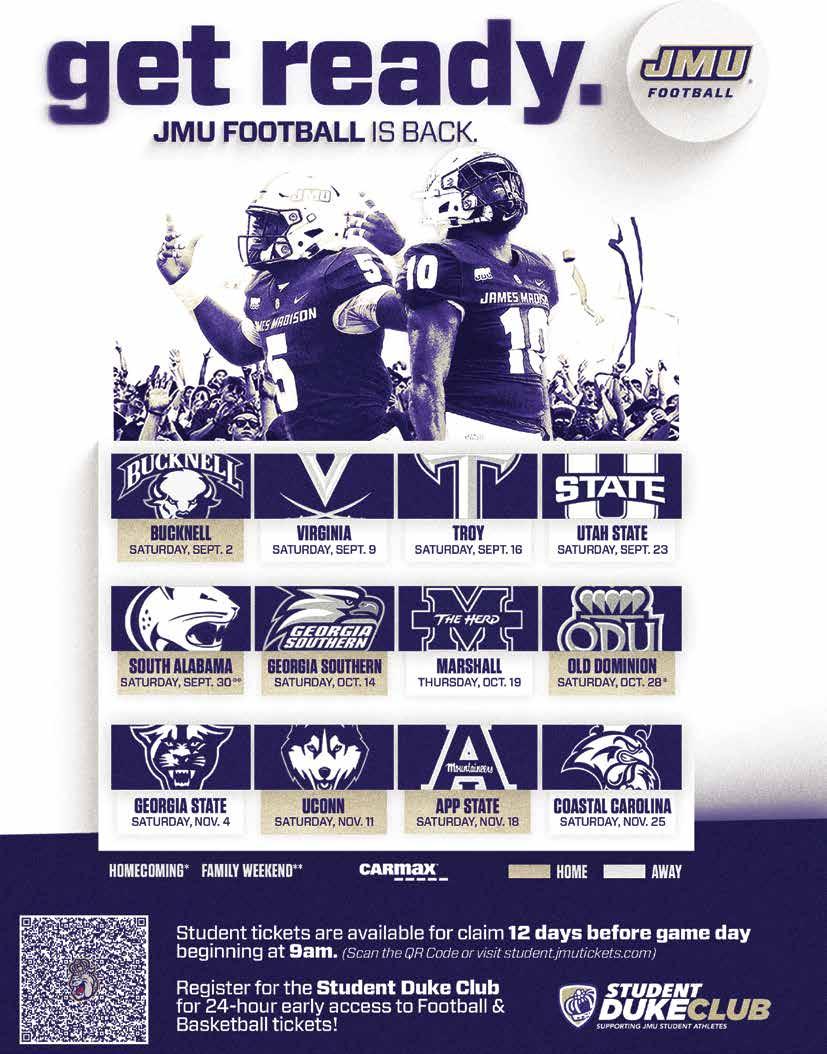
Friendly faces around the block
Tailgating culture around campus exists with passionate alumni
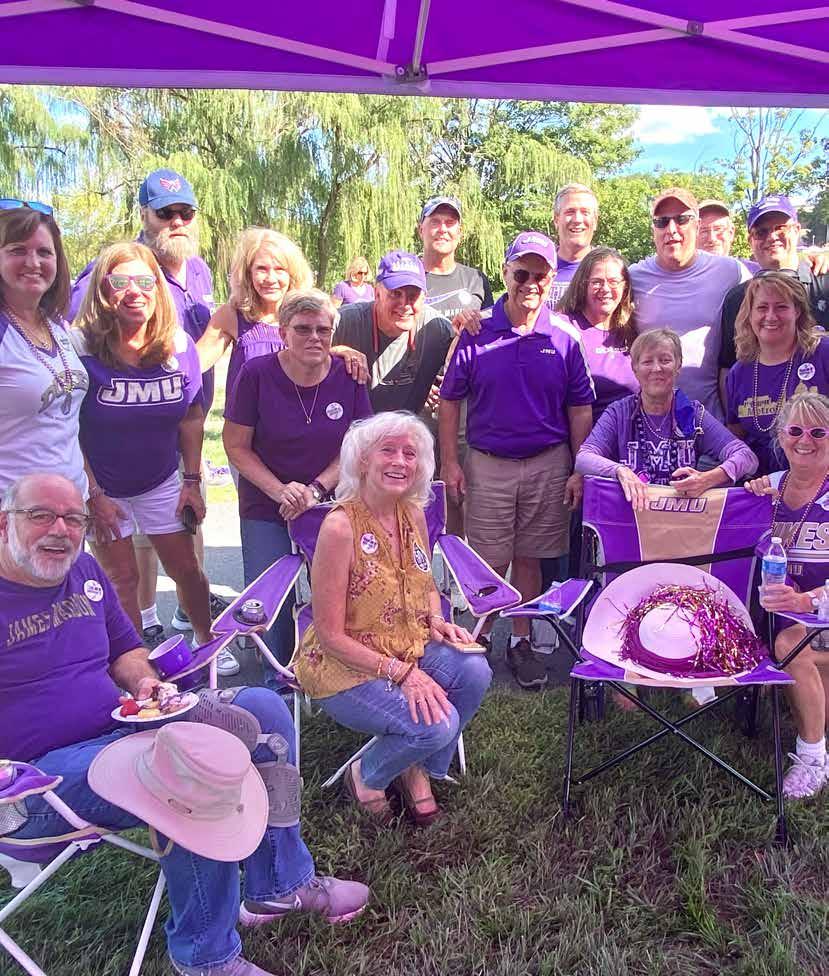
Purple and gold streamers, Duke Dog roaming through the crowd and one of the nation’s best marching bands fill Bridgeforth Stadium every Saturday in the fall. Football games have a big reputation at JMU with a dedicated fanbase and talented athletes, and some argue that the tailgates before the game are one the most thrilling parts.
Madison 101 asked JMU Nation — a Facebook group designed for alumni and current students to connect — what the best tailgates are for the football season, and they delivered. Below are three of the most highly recommended pre-game spots put together by alumni for students, parents and passionate fans to connect and cheer on the Dukes.
Mary Jones and her close-knit group
JMU alumna Mary Jones (‘91), panned her camera around her garage, showing the bins upon bins of tailgating supplies she’s collected over the years. Lined in large purple containers around the perimeter of her garage are beads, cups, plates, utensils, pins, flags, signs, lights for night games, sunglasses, glow sticks, test-tube drinks and even chicken-squeeze toys all decked out in JMU purple and gold. Outside of the bins are propane tanks for bonfires and large JMU themed tents.
After various attempts at returning to JMU as alumni for football games, it wasn’t until Jones and her husband, Sam, had kids that they started to solidify their weekly tailgates. When they returned to campus as a family in 2004, JMU won the national championship. They’ve had season tickets ever since.
Since the magical 2004 season, Jones and her group have grown and turned into “Richmond Row” — a group of people from Virginia’s capital who come week after week to tailgate before the games. Now, her kids still make their way to a couple of games each season, even though none of them attend JMU, Jones said.
“We have a tailgate group discussion that goes on pretty much every day all year round,” Jones said.
After branching out and finding their close-knit group of regulars, they’ve grown closer. The group tailgates at vacation homes together in the off-season and even does “practice tailgates” to try out new dishes and drinks for when game time comes. The group spends time together outside of football and Jones said it’s become a crowd of people who will travel to weddings and funerals together.
“Now other people come to our tailgates,” Jones said. “We have the double purple tents, and we have actual equipment.”
On big weekends like Homecoming and Family Weekend, Jones said she and her group host “easily over 100 people.”
Freshmen walking by, regulars’ roommates and students’ parents all make their way to the Jones’ tailgate.
“It starts off with them coming by themselves or with their roommate,” Jones said, “and then they see that we’re normal people, we’re not grouchy mean people, and then the next week they’ll bring their suitemates. And then by the end of the season it’s like 10 of their friends. That’s fun to see.”
Rain or shine, Jones and her group can be found tailgating in Godwin every weekend during the season with loads of food and drinks. Jones said that she’d love to get more contact with coaches, players and cheerleaders and would even like to see athlete alumni who have gone on to play in the NFL at their tailgates.
Eric
Kuester and his full spread
“It’s pretty much everything you can think of that can fit in my truck,” JMU alumnus Eric Kuester (’92)said.
Originally, Kuester and his group of tailgaters started as a part of Richmond Row, but now, they’ve branched out into their own group. At Kuester’s tailgate, it’s all about the food and he typically starts preparing for a tailgate for the following week on Sunday and smoking meats and getting food on Tuesday.
“We have three or four main courses,” Kuester said. “Three or four sides and we usually have desserts. A lot of people bring stuff to it and we also have a full bar.”
Kuester smokes pork butts, briskets and even “pig shots,” which are a sausage, cream cheese, bacon and green chili mixture all smoked together on the grill.
They typically cook for 75 or more people, and the most they’ve hosted was over 150 people. Kuester said he never makes kids pay and he doesn’t take money from anyone unless they offer, so it can be an expensive event.
“If you want young people to participate in basically a giant party before the game, then as older alumni, it’s our responsibility to kind of host those things,” Kuester said.
Kuester said he’s always the second person to arrive in P Lot, just across from Newman Lake, each week promptly at 8 a.m.
“It’s a whole day for me,” he said.
For the future of their tailgates, Kuester said they’ve thrown around the idea of live entertainment.
“Maybe nothing more than someone with a guitar, a speaker and a microphone,” Kuester said.
Kelly Zuber and the Marching Royal Dukes
The Marching Royal Dukes (MRDs) are one of the most notable bands in the nation. Also being one of the largest college bands with over 500 members, there are a lot of students to host, to say the least.
JMU alumnae Kelly Zuber (‘81), started tailgating in 2009 when her son joined the MRDs, and she took on the task of hosting as many MRD alumni, parents and current students that she can.
When her son was a student, Zuber said she hosted roughly 150 people for breakfast at a tailgate.
“That was the earliest tailgate, and we would be in Walmart at 2 a.m. buying 15 dozen eggs,” Zuber said.
Now, Homecoming and Family Weekend are their biggest tailgates. Current MRD members, families and friends are “sprinkled in” their spot. Three tailgates have joined together into what they call “MRD Row.” It’s triple the food and triple the attendance.
“Because we fed all of these students all the time, I can’t tell you how many MRD weddings we have been to,” Zuber said.
During the pandemic, Zuber said she and her husband started contemplating where they wanted to retire. Ultimately, they landed on Harrisonburg and recently purchased a house with what they call a “Madison Room.”
“I knew I was at home when I looked off the upper deck of the house and could see Wilson Hall,” Zuber said. “I was like, this is it, this is the house.”
Inside the room are walls lined with tailgating memories. Zuber said there’s a 75-inch TV, about 60 canvas print photos, a quilt that she presented to her son on his last game as MRD with 60 photographs on it and an adjacent room that they call “Madison Pub,” for “obvious reasons,” she said.
For future tailgates, if Zuber and her group of regulars aren’t in their spot outside of the bookstore, they plan on watching and celebrating the game from the Madison Room.
“It’s a great group of people,” Zuber said. “And we all love it.”
32
Words by Lauren Kuhno
33
First down, J-M-U DUUUUKES!
At JMU, being a fan is easy. After entering the Sun Belt in 2022, JMU Athletics has become an unstoppable force, which makes attending and watching games exhilarating.
With the increased national exposure the move to the Sun Belt brought, it’s important to remember that students are representing JMU. Here are some ways to remain respectful while enjoying all sports have to offer.
Represent JMU well
First things first, being a good JMU fan means supporting JMU the right way — that starts with your spirit. When you’re at games, the expectation is that you are wearing purple and gold and showing how much JMU means to you.
Another important aspect of being a JMU fan is being respectful. Jake Longenecker, director of fan engagement, said JMU Athletics is focused on making sure JMU fans are consistently keeping up good sportsmanship. This could include keeping a positive attitude when JMU doesn’t win and treating the
 Words by Madison Mills, photo by Savannah Reger
Words by Madison Mills, photo by Savannah Reger
5 things to know about being a fan at JMU
opponents with respect.
“For us, the goal is to showcase what it means to be a good JMU fan and to provide clear cut examples of that,” Longenecker said.
Attend games
An important part of being a good JMU fan is constantly attending the events. The best way to show support to JMU studentathletes is to make sure you’re sitting in the stands for their games.
Longenecker said JMU “really appreciates anytime someone comes to the games, they arrive early, they’re wearing purple, they’re loud, they stay late,” and they “maintain respectfulness” toward each other and the opponent.

When attending games, make sure to try to arrive as early as possible. This will ensure a good seat in the stands close to the front, and you can take advantage of the giveaways JMU Athletics puts together for spectators.
Be respectful on social
Even if hidden behind a screen, students are always representing JMU. Resorting to Twitter or Instagram to comment at other schools isn’t the best way to handle hard feelings.
“We want to remind our students that anything they say lives forever on the internet whether you
delete it or not,” Longenecker said. “We encourage them to be respectful to all walks of life and to not use any abrasive vernacular that would reflect poorly upon our university.”
Stay past half time
It’s discouraging to the players and coaches when fans only stay until half time at football games. Showing JMU spirit means staying until the game finishes to demonstrate that JMU fans through and through want to see the game out.
Not only that, but the Marching Royal Dukes perform at half time and that’s something that can’t be missed. The band spends hours perfecting their routine for the fans to witness it’s something everyone deserves to see.
Streamer rules
Arguably one of the most distinguishable traditions at JMU is throwing streamers at football games. It’s something everyone enjoys when JMU scores a touchdown and the entire stadium celebrates. The best way to exercise this custom is to not be overzealous. Longenecker said the goal of the streamers is to “throw your streamer straight up, catch it and reduce, reuse, recycle,” instead of throwing it at the opposing team’s bench or across the stands.
Following these rules ensures that you’re the best JMU fan you can be while keeping up the support, sportsmanship and respect of a loyal fan.
35
We accept the JMU Access Card
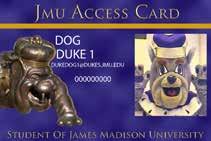
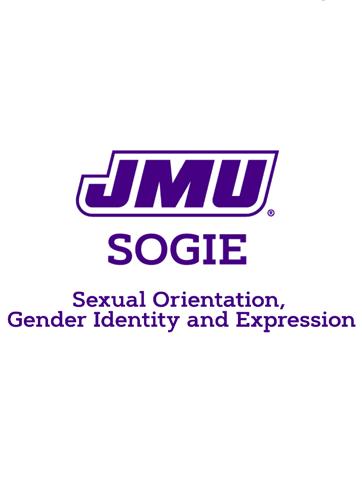
TRAVEL SMART WITH SHD
Shenandoah Valley Airport (SHD) is located just 15 minutes from campus and offers competitive fares with global connections. Use the airport shuttle or take advantage of FREE parking while you travel.




#Fly Go Dukes!
 2035 E. Market Street, Harrisonburg
2035 E. Market Street, Harrisonburg
FlySHD.com Let Duke Dog welcome you to the Official Airport of JMU.
Words by Yousra Errami, photos by Savannah Reger
As May Commencement approached at JMU, the class of 2023 students reminisce over their last four years as Dukes.

Graduation day is a time to celebrate with loved ones and say goodbye to a place that has become their home away from home.
“I’m excited about graduation but also sad because now my time at JMU is almost over and I want more,” Andy Genese (‘23) said. “More time to meet people, see football games, learn, create and experience this place.”
Entering college is never an easy transition; some students struggle to find their place as a freshman, and others have thoughts of transferring. But to push through the rough start and give the JMU experience a chance is worth it, students said.
“I’m sure any senior feels this, but these four years in college are extremely transformational,” Emma Wiltz (‘23) said. “I can say now that in these last four years, I have spent time reflecting on those things and learning more of what makes me me, and who I want to be.”
For some, this marks the end of their educational journey as they exit the classroom and apply all that’s been learned to their future careers. Some have already landed jobs or been accepted into graduate programs, while others are still figuring out
their next steps.
“I am excited to be selling at my first Market before graduation at Lesterloot!” said Wiltz. “I plan on selling at markets when I move to Virginia Beach after graduation but I’m excited that my first one will be with the community that helped build Maverick Vintage!”
Genese said the feelings of nerves and excitement as a freshman walking into their dorm for the first time, meeting new faces and starting new beginnings are the same feelings seniors preparing to walk across the stage and accept their diplomas are currently facing.
“I remember taking my first step onto campus like it was yesterday,” Genese said. “I’ve come so far and learned so much, my younger self would be so shocked by who I am today. I’m more social, creative and willing to learn.”
Despite the excitement, the road to graduation hasn’t been an easy one. Seniors faced challenges along the way, including navigating through the COVID-19 pandemic, financial struggles, personal setbacks and the stress from the academic workload.

“COVID definitely altered how the campus feels,” Genese said. “However, now it feels like even more people are excited to see each other in person and see our entire faces.”
From starting businesses, picking up new hobbies and assimilating to change, Genese, a media arts and design (SMAD) major and Wiltz, a communications studies major, have made their mark here at JMU.
Still, seniors are feeling a mix of emotions as they prepare to leave campus.
“Change is a good thing, it’s necessary for growth,” Genese said. “I have no regrets from my time here at JMU and I’m very satisfied with what I’ve accomplished here.”
But through it all, these soon-to-be graduates have persevered, thanks to their peers’ support and the university’s resources to encourage students’ personal and academic growth.
Learning valuable lessons over the years, Wiltz’s advice for incoming students is that “Your story doesn’t have to look like what everyone else is doing,” while Genese said, “Don’t rush your time here.”
Students have worked hard to earn their degrees, managing coursework with extracurricular activities and jobs along the way, but in the end, college graduation is a time to celebrate not just academic achievement, but also personal growth, friendship and community.
“I may just be a sentimental senior talking, but if I were to rate my time here at JMU on a scale of 1-10, it would be an 11,” Genese said.
37
‘Extremely transformational’ Class of 2023 reflects on graduation and their college experience





GOOD GRADES ARE TOUGH GOOD FOOD GOOD FOOD FROM DOMINO'S® IS EASY Any delivery charge is not a tip paid to your driver. Please reward your driver for awesomeness. Drivers carry less than $20. ©2021 Domino’s IP Holder LLC. Domino’s®, Domino’s Pizza® and the modular logo are registered trademarks of Domino’s IP Holder LLC. 2101404
The best is yet to come
Analysis | JMU ticketed sports have only started to see Sun Belt success

JMU Athletics moved to the Sun Belt Conference in 2022, the first time in 30 years that the Dukes changed conferences. The move turned heads and changed the goals and mindsets of JMU sports teams and across all fields and courts, the Dukes overachieved.
The football program went 8-3 in their first season in the Sun Belt. The Dukes started 5-0, including a comeback against Appalachian State University, a program that’s been viewed as a powerhouse in the conference for years. Late in the second quarter, the Mountaineers took a commanding 28-3 lead, and the Dukes ultimately conquered.
JMU blew out another top team in the Sun Belt, Coastal Carolina, by a score of 47-7 to end the season. JMU women’s basketball won the Sun Belt tournament, appearing in the NCAA tournament for the first time since 2016. Along with that, JMU men’s basketball made a semi-final appearance in the Sun Belt tournament.

Numerous former JMU football players also made appearances at JMU Pro Day this year. The list includes Percy Agyei-Obese (RB), Todd Centeio (QB), and Isaac Ukwu (DL) (RB) among many others.
When making the move up to the Sun Belt, JMU sports programs were expected to go through some growing pains.. In a way, it seems like we were being held back by the CAA. To be able to pick up where we left off and continue our success is outstanding. From the eyes of a student who only knows the CAA, it was hard to imagine a reality in which our sports programs would flourish due to the increase in competition. For new students coming in, I am incredibly optimistic that our athletes will entertain their fellow classmates.
Looking forward to next season, the JMU football schedule has been released. Highlighting matchups for next season include the University of Virginia (U.Va) and Coastal Carolina on the road, and South Alabama, Old Dominion, and Appalachian State at home. The schedule will be relatively

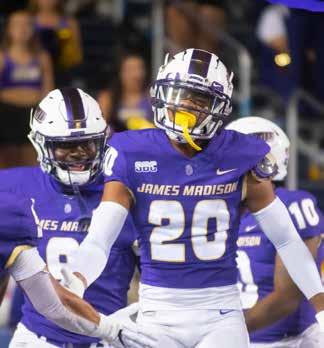 Words by Kevin Scher, photos by Savannah Reger
Words by Kevin Scher, photos by Savannah Reger
40
similar every year, not including out-of-conference games.
The Dukes have several new additions coming into the locker room, including two quarterbacks and six skill-position players. Replacing former quarterback Todd Centeio for the coming season will be difficult, but making these decisions early on in April will put the new additions in the right position to learn the offense in time for the first snap of the season.


Moving from the field to the court, men’s basketball, who wrapped up its 2022-23 season March 5, doesn’t have a schedule finalized yet for next season.. However, this early in the offseason, it’s important to note that there will be two departing players from the roster: Redshirt sophomore guard Terell Strickland is headed to Long-Island University and redshirt sophomore guard Tyree Ihenacho is off to the University of North Dakota. There haven’t been any additions from the transfer portal as of yet.
It was a tremendous season for redshirt sophomore guard Terrence Edwards , averaging thirteen points a game and shooting 53% from the field. As well as Edwards, redshirt junior guard Noah Freidel put on a Dukes uniform for the first time last season and changed the game whenever he was on the court. He was fifth on the team in total steals and blocks and led the team in three-pointers (63). The men’s team plays very old school: Coast to coast, transition basketball and playing down low in the paint. Freidel brought new energy to the court, proving that JMU can knock threes when it needs it and play suffocating defense.

For the women’s team, there’s a similar timeline for its offseason considering it was knocked out of the NCAA tournament by Ohio State in the first round. No new additions have been made to head coach Sean O’Regan’s team but fifth-year guard Kiki Jefferson , is leaving JMU to play
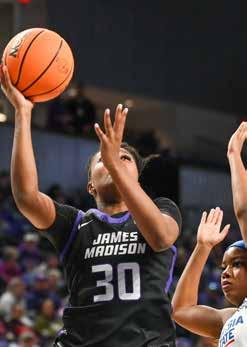
at the University of Louisville. Jefferson is the reigning Sun Belt Player of the Year.
“JMU Nation, Thank you for taking a chance on a kid from Lancaster, PA. Coach O, thank you for never giving up on me,” Jefferson said in a statement.
As for the returning Dukes, it appears that rising seniors guard Peyton McDaniel and center Kseniia Kozlova will lead the Dukes onto the court next season. Both players averaged over ten points a game last year. However, there is still time for the coaches and scouts to bring in new talent before the opening tip for the 2023-24 season.
JMU programs have a history of success and excitement. However, last season there was a problem in which fans would leave the football games early, a pattern that’s gone on for years and years. Vice President for Student Affairs Tim Miller addressed the university Oct. 22, 2022, after the Homecoming game.
“Supporting our team. From the first whistle to the last. We all need to show up for our team and be with them the whole time. Students, you are used to an FCS season where we were winning by 30 or 40 points some games, so you didn’t see the need to stay for the entire game, the game was kind of over by halftime. Well, this weekend, that game was 12-9 at halftime and a lot of people left. That’s a whole game ticket. And with us selling out for all 8,000 student tickets, I need you to commit to the whole game when you do that. If you’re not able to do that, leave that ticket for someone who will,” Miller said via Instagram.
This is a prevalent issue in our student community that needs to be addressed.. For current and newly enrolled Dukes, students should stand with the athletes. This is an extremely fierce level of competition coming to Harrisonburg and as fans, showing support is essential for the Dukes.
41
Meet the team
EDITOR: Savannah Reger
MANAGING EDITOR: Kasey Trappuzzano
ARTICLE EDITORS: Emma Johnson & Madison Mills
CREATIVE DIRECTOR: Madi Rohm
GRAPHIC DESIGNER: Katie Dunn
SOCIAL MEDIA COORDINATOR: Yousra Errami
PHOTO EDITOR: Sophie DiFrancesco
STAFF WRITERS:: Ashley Anderson, Katie Dunn, Yousra Errami, Sarah Herring, Haley Huchler, Emma Johnson, Lauren Kuhno, Madison Mills, Kevin Scher, Kasey Trappuzzano & Carolynn Unger
STAFF PHOTOGRAPHERS:: Sarah Herring, Savannah Reger
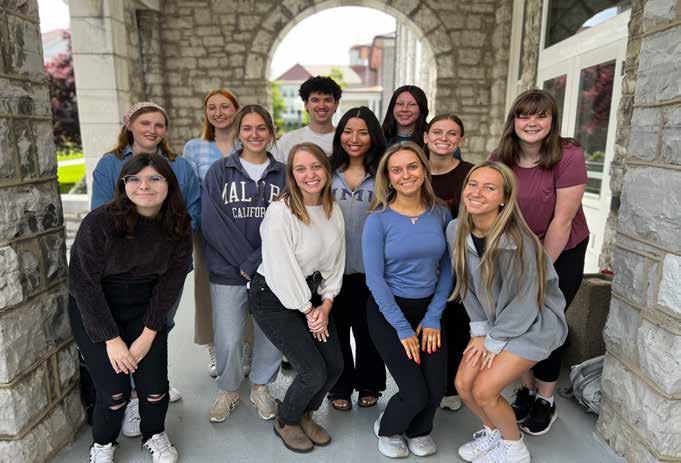
42





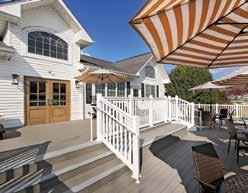

• RENOVATED CLUBHOUSES • • NEW HARDWOOD FLOORS • • UPDATED APARTMENTS • APPLY FREE ONLINE BEST VALUE AT JMU 540.432.0600 | LIVE-THEHILLS.COM THEHILLSJMU
























































 Words by Madison Mills, photo by Savannah Reger
Words by Madison Mills, photo by Savannah Reger







 2035 E. Market Street, Harrisonburg
2035 E. Market Street, Harrisonburg









 Words by Kevin Scher, photos by Savannah Reger
Words by Kevin Scher, photos by Savannah Reger











